Why Visit Now: Atlas Mountains
Explore the wonders of Morocco’s Atlas Mountains region, where breathtaking landscapes, rich Amazigh culture, and thrilling adventures await.
Morocco’s Atlas Mountains region is known by locals as "lMaghrib nsiti," or Forgotten Morocco. It is a land where the Amazigh people, Morocco’s Indigenous population, live closely connected to one another and their land. Spend time outdoors exploring the Atlas wilderness areas on foot, horseback, skis or wheels. Visit ancient kasbahs, lose yourself in lunar-like landscapes, and marvel at impressive geological formations. The Atlas region offers many opportunities for a fresh perspective and a sense of grounding.
The September 2023 earthquake was the first recorded in the area, causing remote communities to collapse and suffer devastating losses. A year later, the rebuilding process continues. Traveling to a region impacted by a natural disaster is not for everyone. There are visible scars, such as communities still living in tents, and stories of loss told by displaced locals. But it can be a humbling, life-changing experience. Your presence will be appreciated, and in return, you can enjoy majestic mountain scenery and the glow of forging meaningful connections.
Here are some tips on how to experience Morocco’s Atlas Mountains.
1. Trekking in Toubkal
The verdant valleys and soaring peaks of the High Atlas create astounding trekking territory. Most hikers are drawn to Toubkal National Park for its hiking trails and opportunities to connect with Amazigh culture. Imlil, Morocco’s hiking hub, is easily accessible from Marrakech. The village provides a great base for visitors of all budgets and fitness levels.
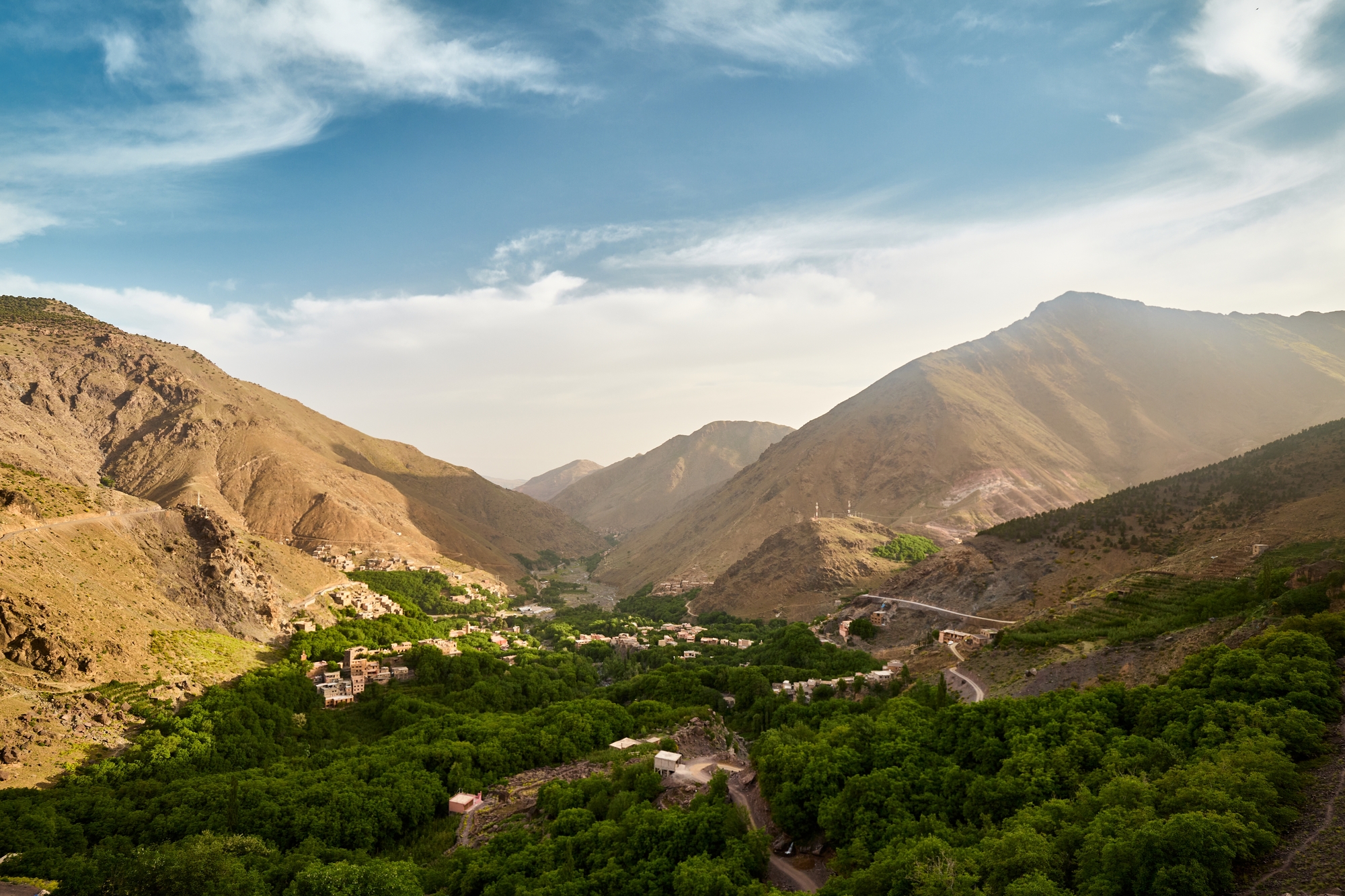
Svetla Ilieva
Fernwayer’s privately guided treks depart from Imlil. Choose from an easy, family-friendly route in the lower hills or a more strenuous two-day trek to summit Mount Toubkal (4,167 meters). The two-day trek includes a night in the Toubkal Refuge camp, with a pre-dawn push to the summit for a spectacular sunrise over the rugged High Atlas peaks.
For the 2024 winter season, from November to April, hikers are advised to avoid summiting Mount Toubkal. Why? After the 2023 earthquake, the route is less dependable. It’s best to hold off until May. We hope this will change in the future, as trekking in the snow — while challenging — offers dazzling views of the High Atlas’ snow-capped peaks.
2. Geological masterpieces
On the southern side of Toubkal’s peaks, traveling toward the Sahara, the mountainous terrain opens onto the Dadès Valley plains. The valley is dotted with fields of rose flowers, oases filled with towering date palms, and numerous mud-built kasbahs, or castles. Two dramatic gorges carve through the valley from roughly east to west, making it a paradise for rock climbers and geologists.
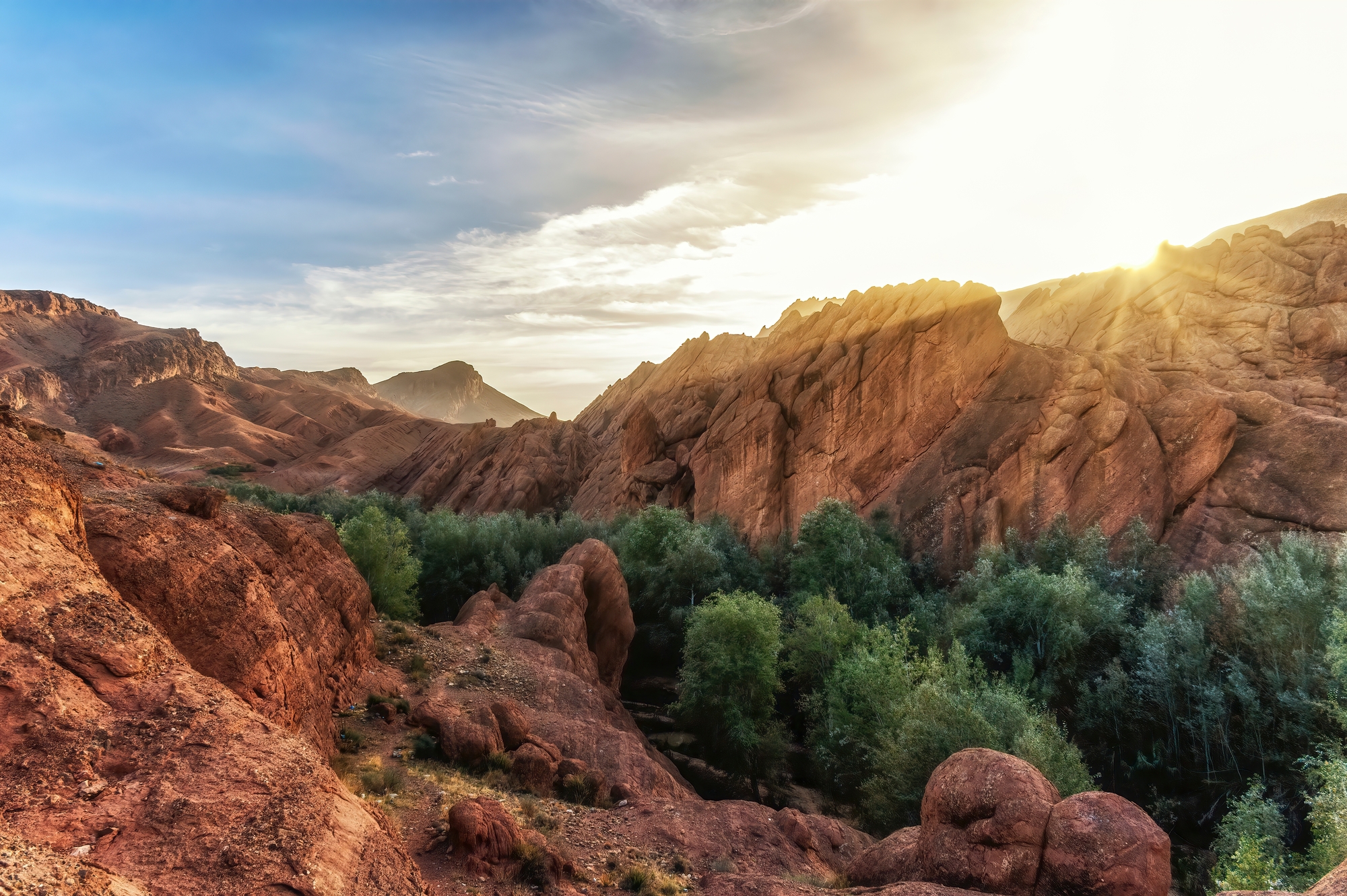
Atosan
Take a walk through the Dadès Gorge, with its impressive red sandstone cliffs, and let your imagination run wild at the "Patte des Singes," a collection of unusual rock formations. Hairpin roads wind through the gorge. If you want to enjoy the view, it’s worth considering hiring a driver-guide to take the wheel.
Close to the town of Tinghir is Todra Gorge, a dramatic limestone canyon with towering red rock faces that are perfect for rock climbing. There are believed to be about 400 climbs in the area, ranging from beginner routes to advanced climbs that scale the giant vertical walls of the gorge.
3. Nature’s larder
Whilst the rugged peaks of the High Atlas may appear barren and stark, the fertile valleys and foothills below are a rich source of natural abundance. As you wind your way through the Atlas Mountains, keep an eye out for stalls and cooperatives selling produce straight from the neighboring fields. Several farms produce high-quality olive oil and honey, particularly in the Ouirgane Valley and at the foot of the Atlas Mountains.
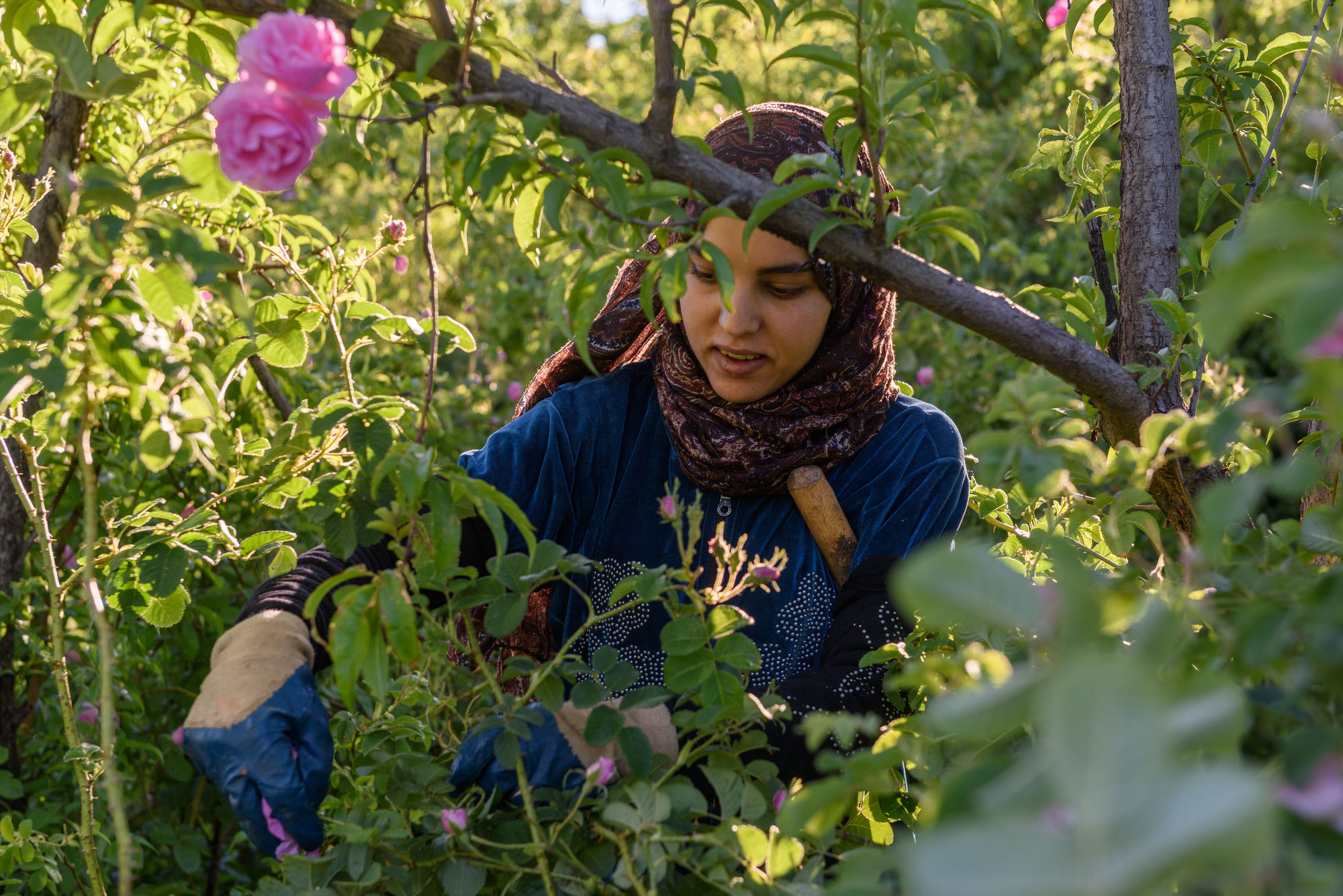
Luisa Puccini
The Kelaat M’Gouna, or Valley of Roses, is famous for bursting into color with thousands of soft pink and fragrant roses that bloom during the harvest season, usually in May. Throughout the year, rose water, dried petals, and rose oil can be purchased across the region. Saffron is harvested from fields of purple crocuses in Ourika in October or November, depending on the season. A visit here provides a fascinating insight into the delicate and laborious saffron harvesting process.
4. Hearty culinary adventures
Food is a central part of Morocco’s culture, seen as a way to connect, nourish and share with family and the wider community. Many recipes from the Atlas region require time, with tagines often slow-cooked on charcoal, and expertise, using age-old techniques passed down through generations.
Read more: Why visit now: Fes
A journey through the High Atlas offers plentiful opportunities to sample authentic Amazigh cuisine, such as tagines, couscous, and hearty soups made with local produce and served with genuine warm hospitality.
To get closer to the region’s cuisine, try an immersive culinary adventure. These hands-on cooking workshops, run by a local chef at her farm, provide a farm-to-table experience — from picking ingredients in the garden to blending spices and preparing flavorful tagines — all while soaking up the serenity of the Ouirgane Valley.
Stay Inspired. Explore the World.
Subscribe to the Wayer Journal and discover a world of inspiring stories and Fernwayer's newest, meticulously crafted private tours.
5. Celebrated in movies and protected by UNESCO
It’s unsurprising that the region has appeared in several blockbuster movies. The lunar-like landscape provides the perfect backdrop for films requiring otherworldly scenes and a sense of antiquity. Many are familiar with Ridley Scott’s Gladiator and, more recently, its sequel Gladiator 2. Large parts of both movies were filmed in Ouarzazate, home to several film studios.
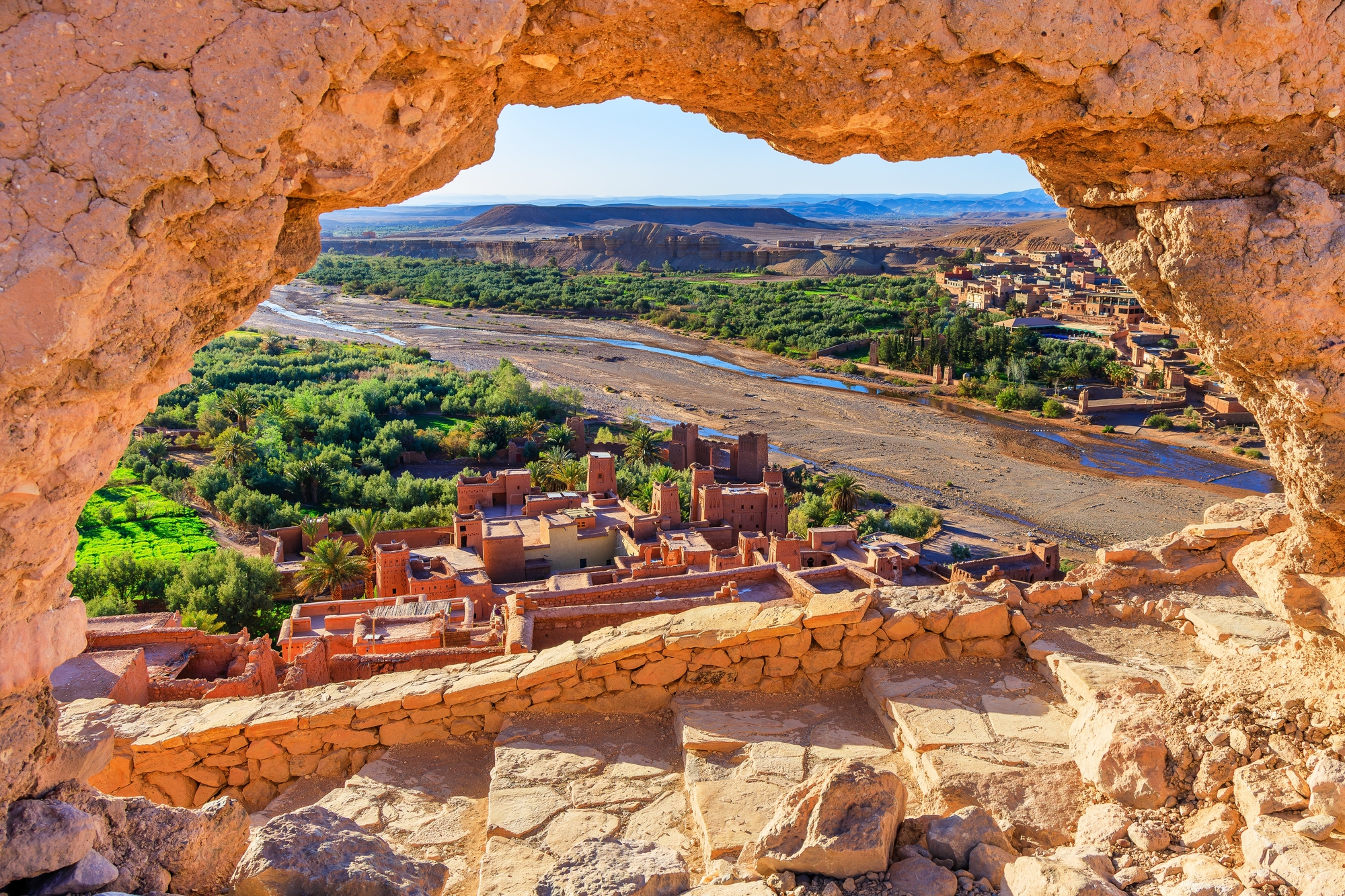
SCStock
Nearby, Ait Ben Haddou, made famous in the TV show Game of Thrones, is an impressive 11th-century earth-built ksar (fortified village) and one of Morocco’s most spectacular and well-preserved ancient sites. Remarkably, the ksar is still inhabited and has been under UNESCO protection since 1987. It is best visited at sunrise or sunset, before the crowds arrive, when you can enjoy the changing colors on its earthen, mud-brick walls.
6. Immerse yourself in Amazigh culture
While the landscapes and vistas are spectacular, taking time to connect with the local Amazigh people may leave an equally strong impression. There are many ways to connect, one of which is shopping for regional crafts. Women of the Atlas Mountains are renowned for making some of Morocco’s most celebrated rugs, often handwoven on their looms at home or in cooperative hubs.
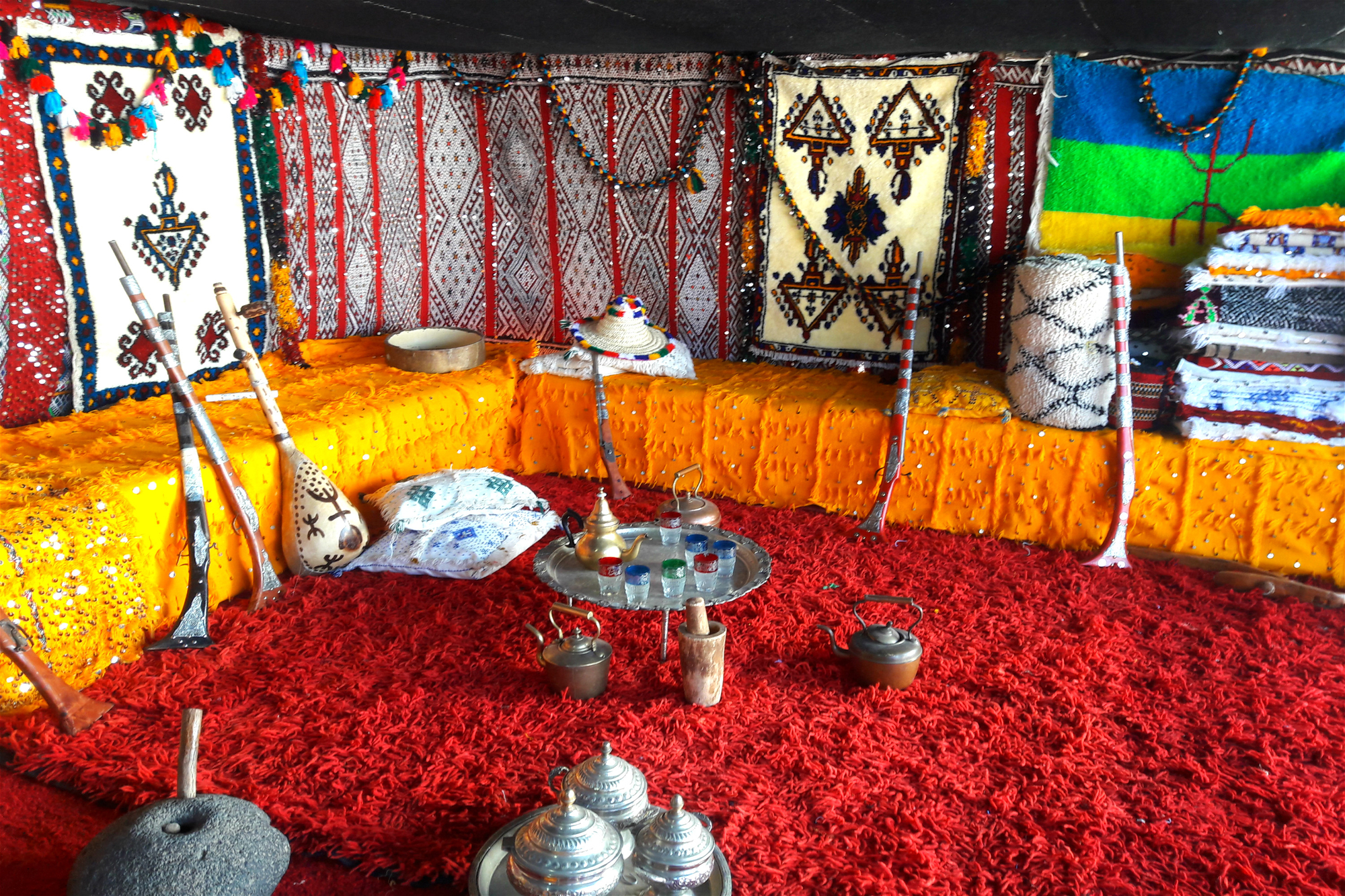
MOHAMMED ABDELJALIL
Another way to immerse yourself is by having tea with an Amazigh family. Being invited into a local’s home is a meaningful experience—an opportunity to engage, learn about, and observe a different way of living.
Read more: A journey to the heart of Amazigh traditions
7. Take the high road
The Ourika Valley, Asni, Ouirgane, and Imlil are easily accessible from Marrakech by road. While the first part of the drive along the national road (N7) may not be particularly scenic, it offers a glimpse into Marrakech’s ongoing expansion. It’s the ascent into the mountains, with the promise of peaks and clusters of rural villages, that excites most travelers.
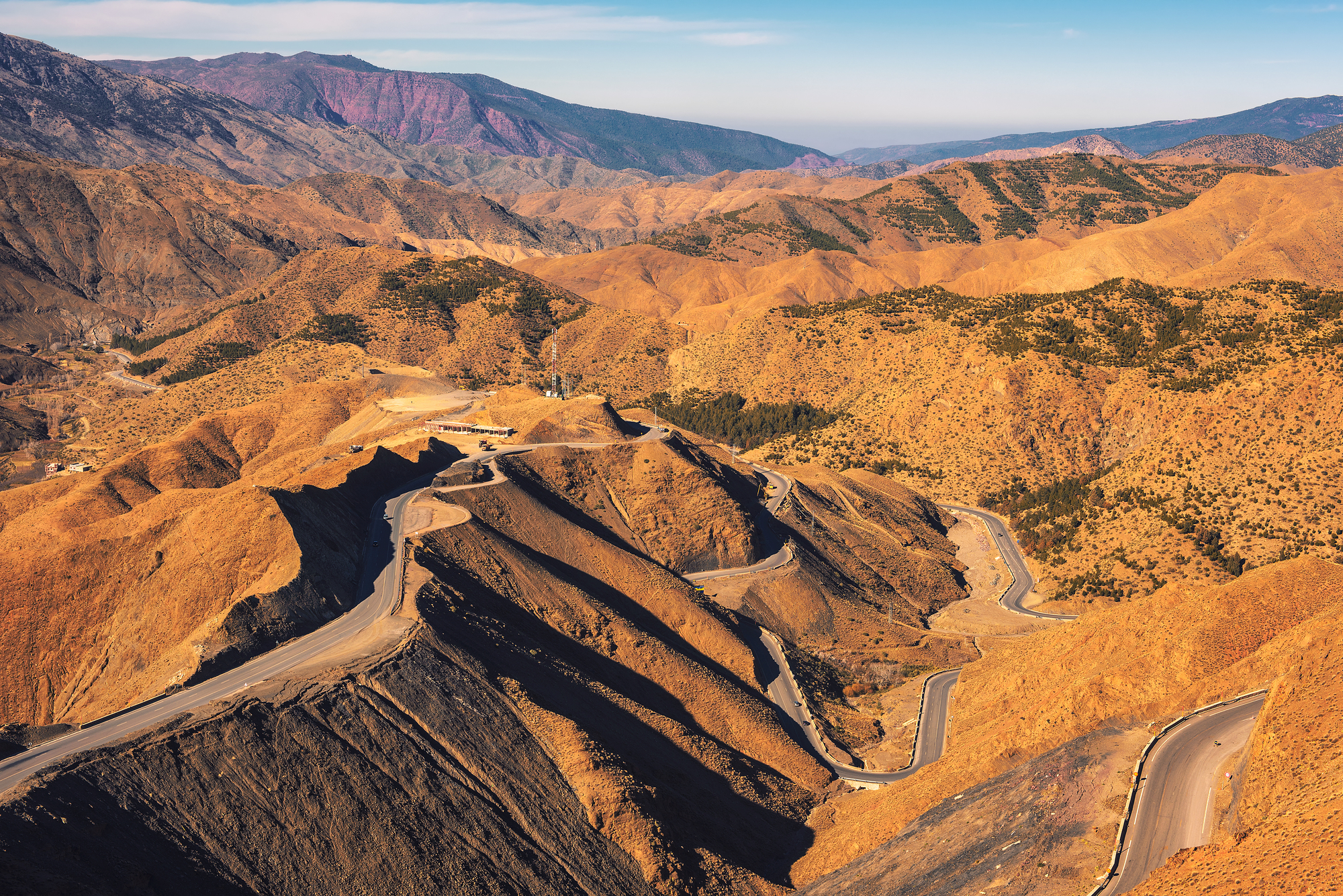
Nick Fox
Looking for adrenaline? Several mountain passes lead either deeper into the valleys or into other regions. The most famous are the Tizi n'Tichka and Tizi n'Test passes. These road trip classics offer panoramic views and dramatic drop-offs that could induce vertigo even in seasoned adventurers. If traveling in winter, check ahead, as snow may render the passes impassable.

